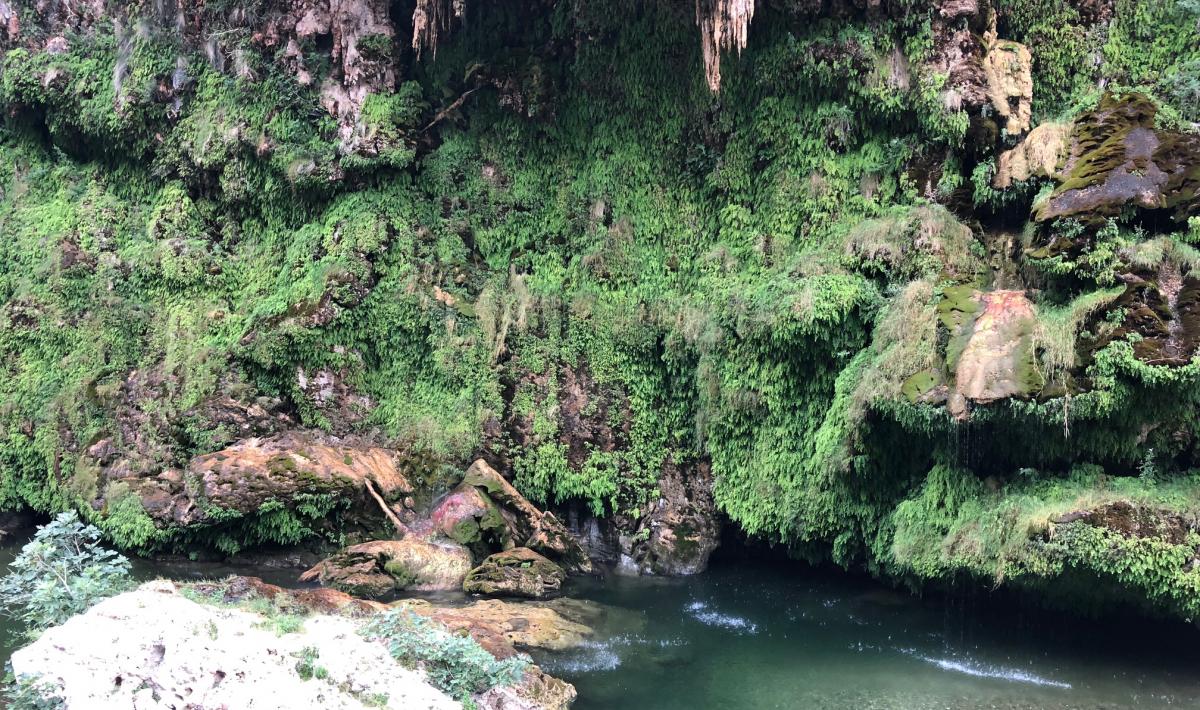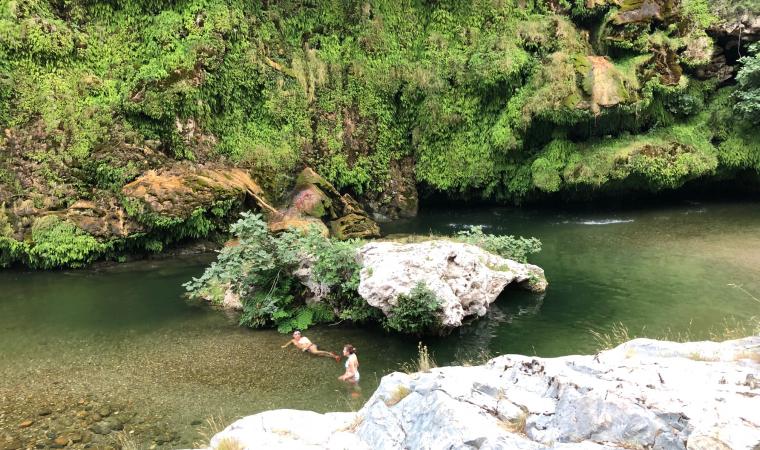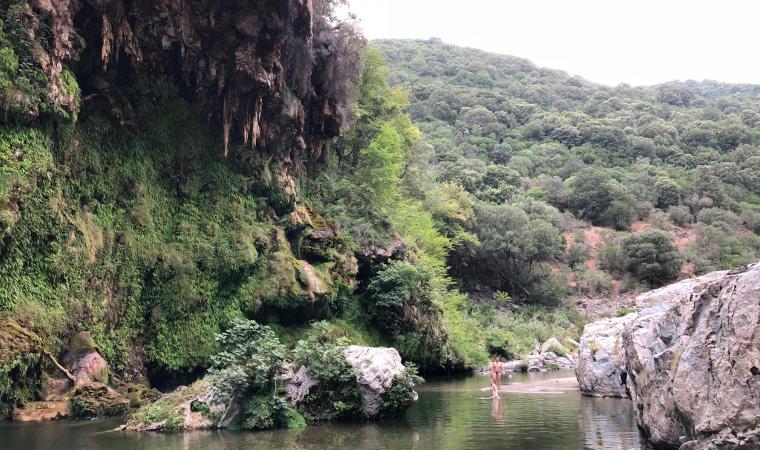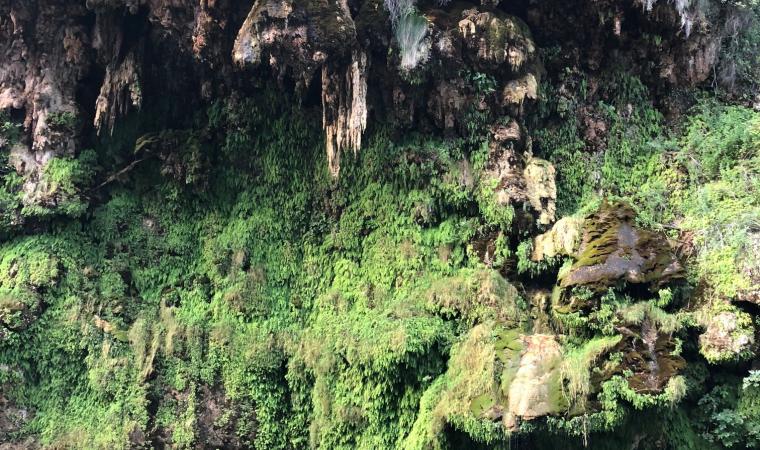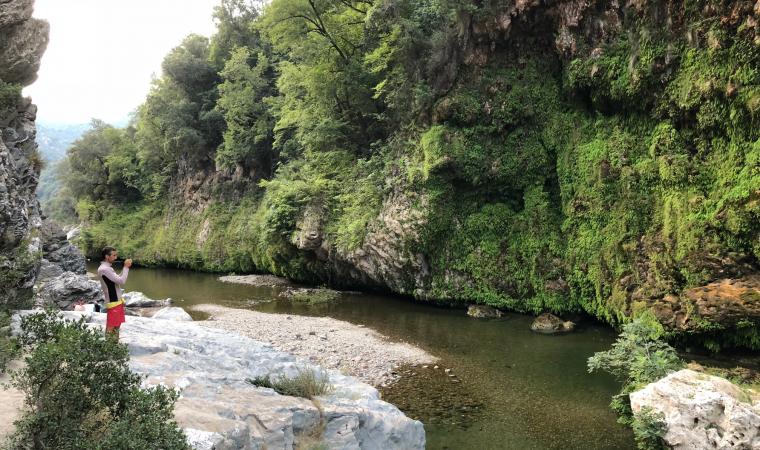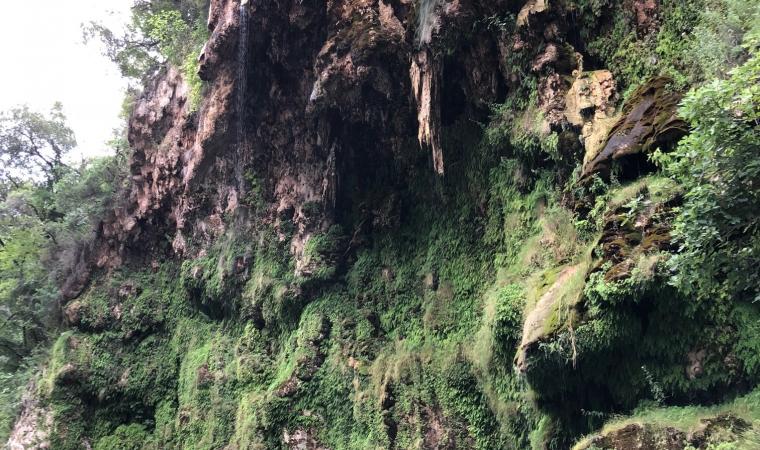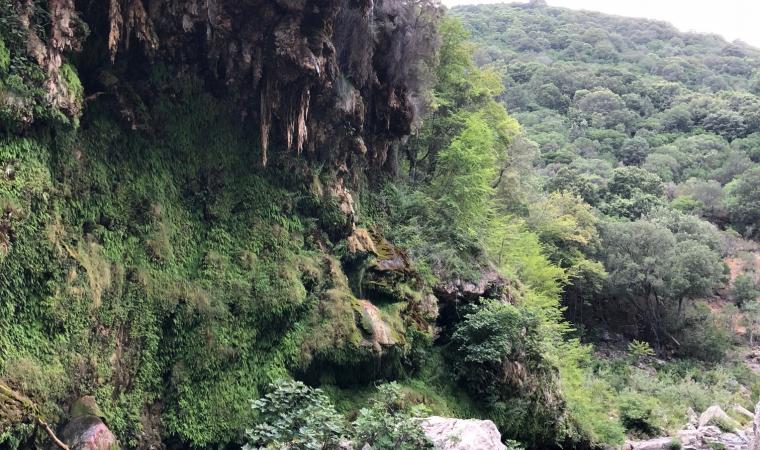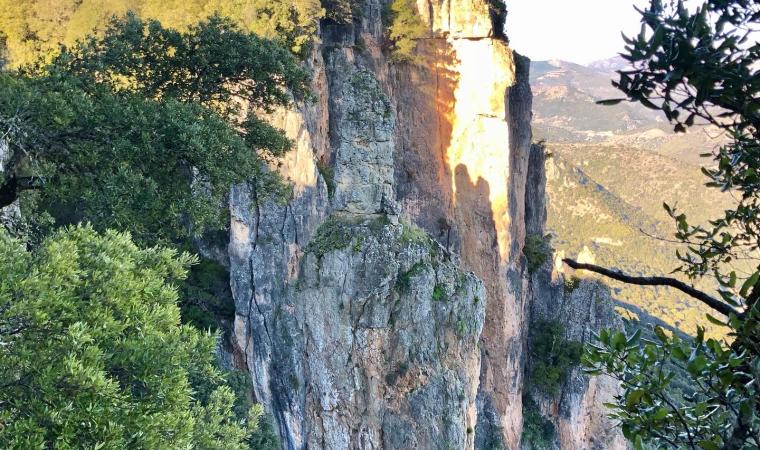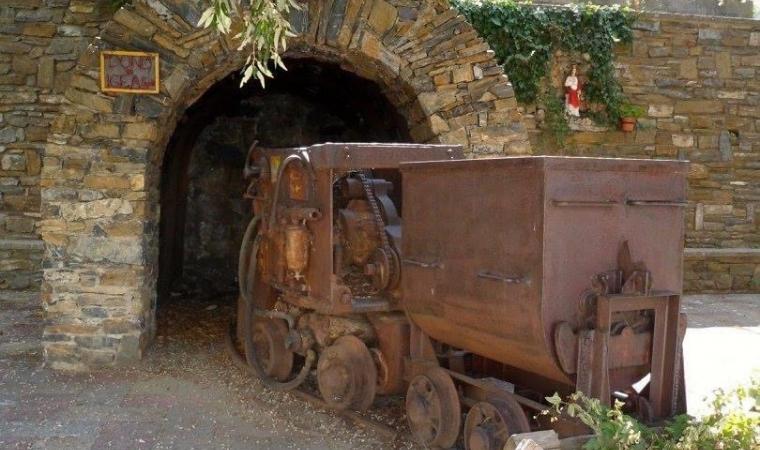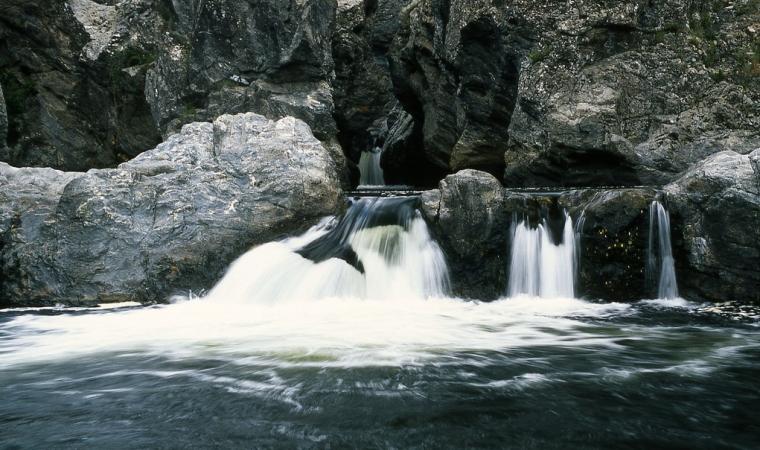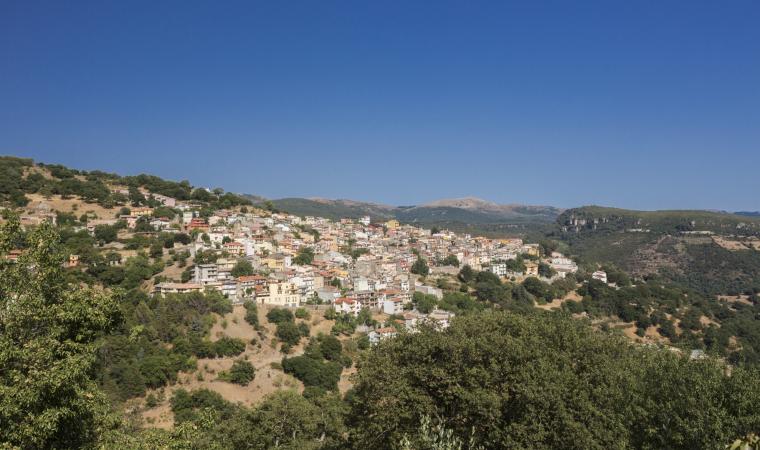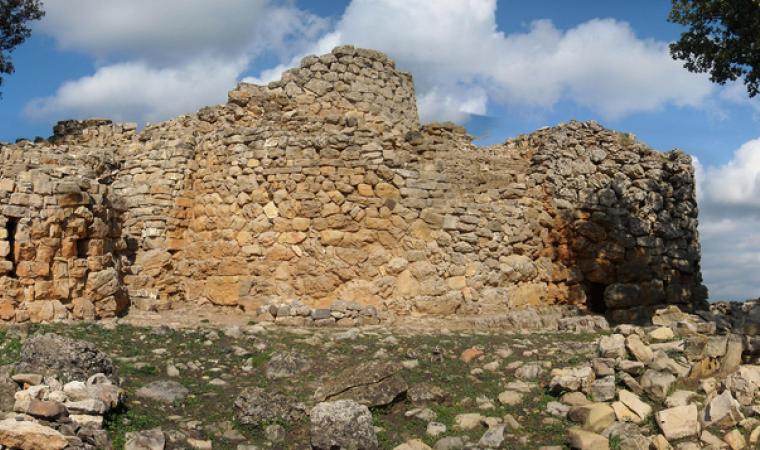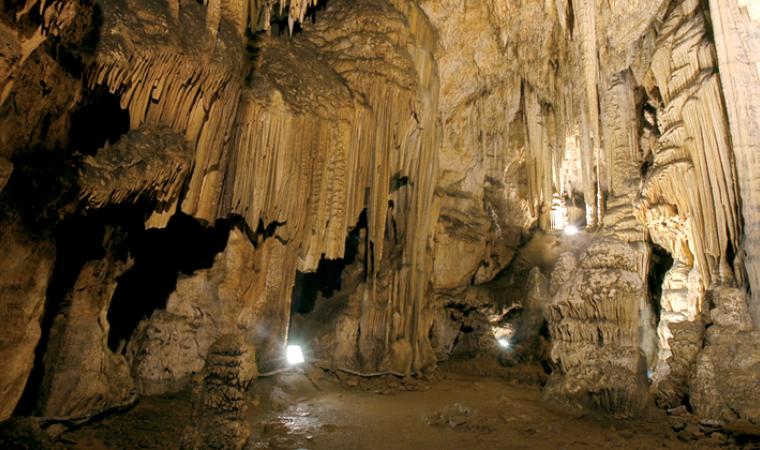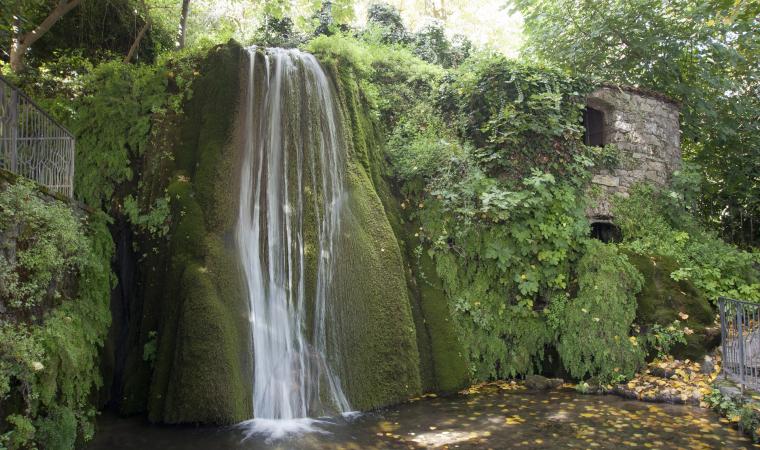"Corner of paradise", "tropical landscape", "a unique waterfall", "never seen anything like this", "a fantastic experience", "an enchantment", "pure magic", "a piece of Sardinia to keep in your eyes, your heart and your skin forever". These are the comments left by visitors to sa Stiddiosa, a masterpiece of nature along the River Flumendosa, in the territory of Seulo, around 8 km from the border with Gadoni.
The name literally means 'dripping' and derives from is stiddius, the effect of falling water drops, which in this case creates a waterfall. Or more accurately, rather than waterfall, a 'drizzle', filling the air with tiny drops falling from a karst source above. The drops fall along an imposing polished rock face, perpendicular to the river bed, characterized by enormous calcareous formations - deposited by the continuous flow of water - and mostly covered by hydrophilous plants, especially maidenhair. The spring water is divided into a thousand streams channelled by the calcareous formations and plants; the result is the thick drizzle, which falls with a dense 'dripping' in winter and 'softly' in summer. It ends its fall in a pond of emerald green water on the edge of the right bank of the river, where in the summer you can swim while watching the spectacle.
The dripping wall is an uncontaminated and wild place at 300 meters above sea level, nestled in the narrow valley of the Flumendosa covered by holm oak woods. To reach it you will cross a long stretch of dirt road, then, after parking the car, continue on foot - with hiking shoes - for about a kilometre of descent along a trail formed on the side of the valley between strawberry trees and phyllirea. Below, the river flows slowly by, towards a dam downstream that forms Flumendosa Lake. The route is a hard walk, especially in ascent, but it's worth it. At the end of the descent, the Stiddiosa will appear before you in all its beauty.
Other magical waterscapes characterise Seulo, a hospitable mountain village. The most famous natural feature is on Stampu 'e Su Turrunu, a singular phenomenon comprising a sinkhole, cave and spring with a waterfall and pond, immersed in the thick green forest of Addolì, on the border with Sadali. At is Caddaias, on the other hand, the rocks shaped by the Flumendosa - which runs through 27 kilometres of the territory of Seulo - look like large pools with rapids running out of them. Forau Murgia is another beautiful natural pool in the middle of the forest created by the river, and it too has several waterfalls, creating the cascades of Piscina 'e Licona. Over the millennia, the flow of water has carved karst caves, which have been inhabited since prehistoric times. Water and wind come to life by modelling the contours of s'Arcu 'e su cuaddu, a natural dolmen, under which a domu de Janas has been excavated. Among the other archaeological treasures are three nuraghes, two of which stand close to each other: the smaller one, on Nuraxeddu, and the largest, on Nuraxi 'e Pauli, while a third Ticci nuraghe stands close to the remains of a large village. Seulo is known as the town of s'orrosa 'e padenti, or the pink peony, which paints the steep slopes of Mount Perdèdu, overlooking the town, in shades of red and yellow each spring. You can see this amazing scene in April at Sa Funtana 'e su predi.

